7 Strategies to Form Healthy Eating Habits, According to RDs
At Real Simple, we don't believe in food guilt or "detox diets." Sometimes it's just gratifying to nourish ourselves with wholesome foods and add healthy habits to our routines. These seven dietitian-endorsed strategies, plus easy recipes, will help you feel your best.
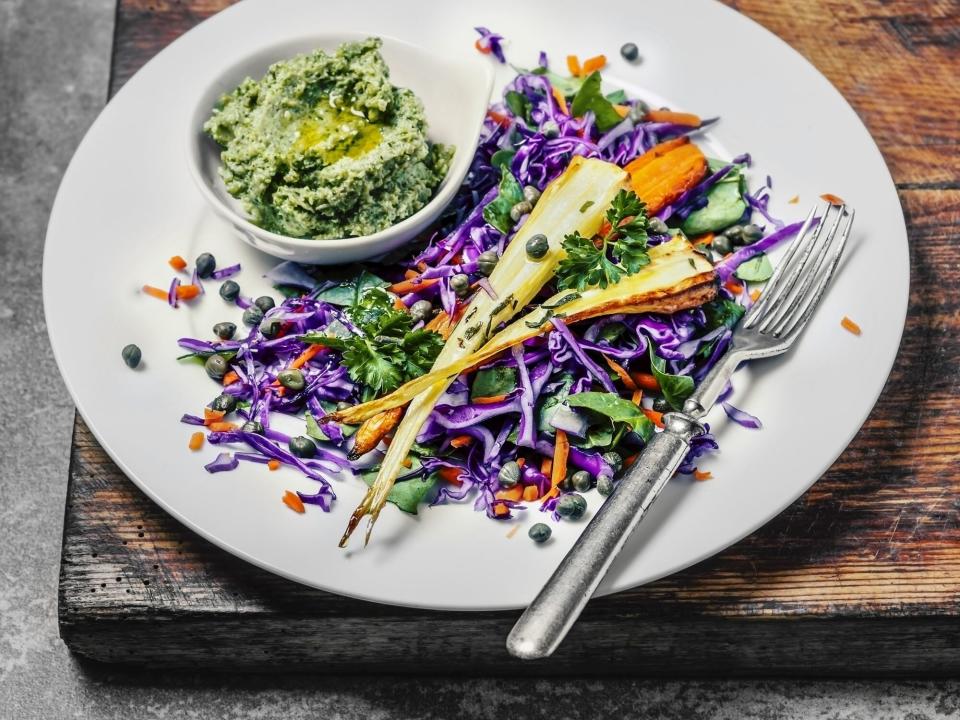
Getty Images
Feed Your Gut
It's mind-blowing how critical gut health is to overall wellness. "Millions of good bacteria in your gut impact digestion, and about 70 percent of the immune system resides there," says dietitian Maya Feller, RD, author of The Southern Comfort Food Diabetes Cookbook. "It's also where some of the body's mood-supporting neurotransmitters, like serotonin and dopamine, are produced." One of the best ways to improve your gut health is to eat plenty of foods rich in probiotics, such as yogurt, kefir, kimchi, miso, and refrigerated sauerkraut. Kombucha—essentially a fizzy, fermented tea—is another good source. Feller suggests looking for bottles with less than five grams of added sugar per serving. And keep in mind that kombucha contains a very small amount of alcohol, a byproduct of the fermentation process.
This recipe pairs kombucha with zesty lime, punchy ginger, and tart pomegranate juice, creating a refreshing drink that will get you through that afternoon slump.
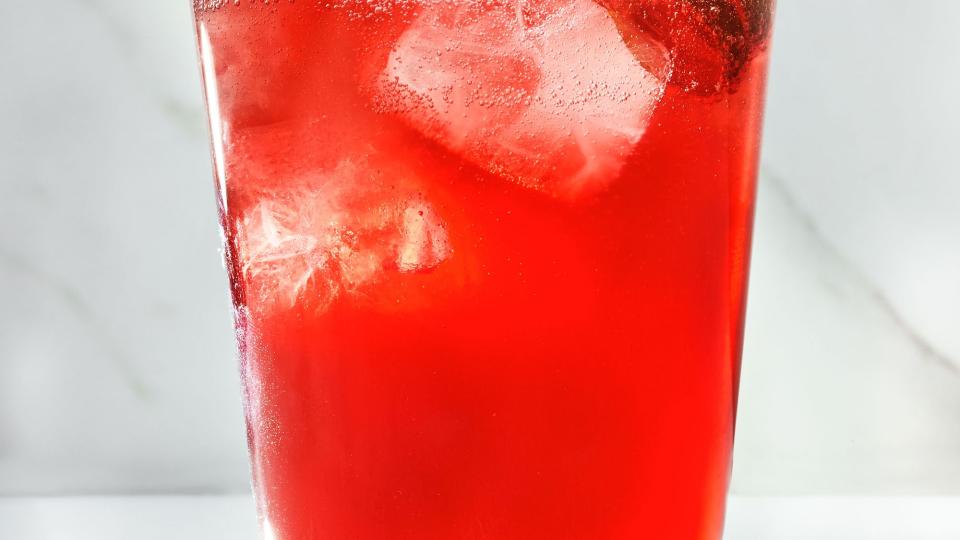
Start Savory
One easy switch is to ditch added sugars at breakfast. You can still eat fruit, but be aware that muffins, many boxed cereals, and even some yogurts and coffee drinks contain a lot of added sugar. "Those sweet foods don't usually offer much in the way of fiber, protein, and healthy fats," says Katie Sullivan Morford, RD, author of the cookbook Rise & Shine. "So you're starting your day off on a sugar high, without the other nutrients to give you sustained energy." Morford often gravitates toward savory toasts in the morning, such as smashed avocado on whole-grain bread with thinly sliced radishes and cucumbers. Eggs make regular appearances as well. "Eggs are a mini miracle food," she says. "There's so much good nutrition inside that shell, including protein, vitamin D, and important antioxidants."
This savory plate includes sautéed hard-boiled eggs with jammy yolks, served alongside creamy hummus, fluffy warm pita, and fresh herbs.
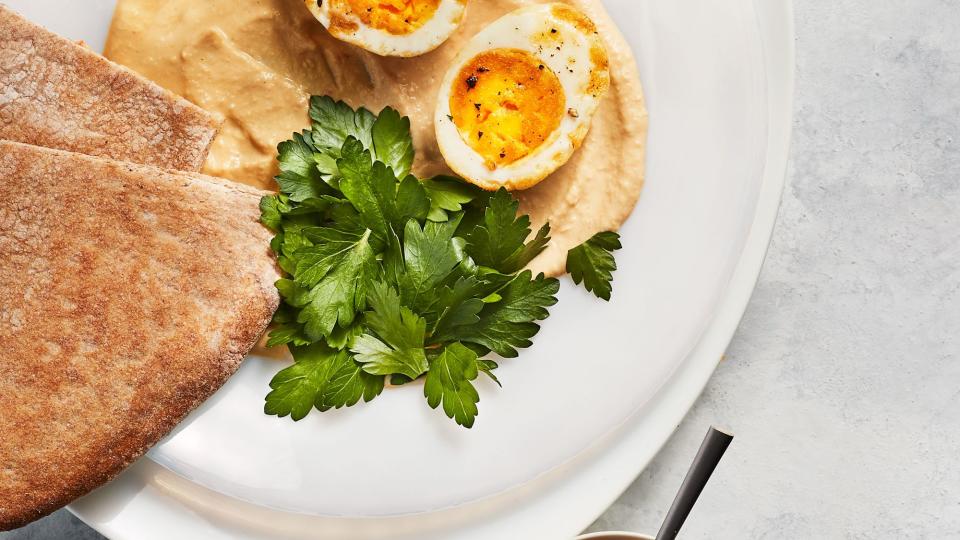
Go Fish
Eating seafood once or (bonus!) twice a week is an easy nutrition boost, Feller says. "Salmon is an excellent source of omega-3 fatty acids, which are essential nutrients, especially for brain and cardiovascular health." Get more salmon on your plate by taking advantage of a high-quality canned version—it's an affordable and versatile pantry staple with the health benefits of fresh fish. "Look for fish packed in BPA-free aluminum cans, with a third-party certification of sustain-ability," Feller says. We like the Wild Planet brand, which follows Monterey Bay Aquarium Seafood Watch guidelines.
These burgers, which take less than half an hour to whip up, are made with canned salmon, mayonnaise, fresh lemon juice, horseradish, Dijon mustard, breadcrumbs, and more.

Hydrate Wisely
You know you should drink water throughout the day. "Even low levels of dehydration can make you fatigued, so drinking enough helps optimize your energy," says Ellie Krieger, RDN, a television personality and cookbook author. But you can stop being so rigid about the ol' eight-glasses-a-day advice, she says. The amount of water your body needs depends on your metabolism, activity level, and climate, she explains. "Most people need between 9 and 13 cups of total fluid a day, which includes the liquid you get from soups, smoothies, water-rich foods, and anything else you drink, even tea and coffee." Aim to get at least half your fluid needs from water. If you aren't a fan of plain H2O, pretend you're at a spa and add cucumber slices, berries, grapes, or a twist of citrus.
This water gets a refreshing burst courtesy of cucumber slices and fresh lime juice.
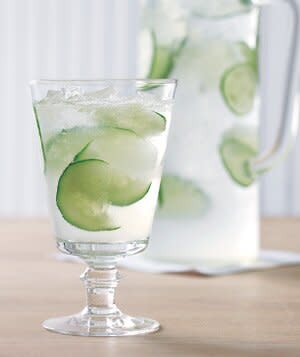
Shrink Your Eating Window
Sometimes it's less about what you eat than when you eat it. Enjoying your meals within a 12-hour time frame each day can help reduce inflammation, improve gut health, and boost energy. This is basically the gentlest form of intermittent fasting, says Carolyn Williams, PhD, RD, author of the upcoming One-Pot Meals That Heal. "The 12-hour window is so doable. Perhaps you only eat between 7 a.m. and 7 p.m. Black coffee, plain tea, and water don't count." At the 12-hour mark, the body goes into "fasting mode" and begins to rely more heavily on body fat for energy. "This fat usage triggers hormonal adaptations that can lead to improvements in insulin sensitivity, fasting blood glucose, blood pressure, triglycerides, and other inflammatory blood markers," Williams says. Contrary to what you might think, hunger and cravings tend to decrease. And not only do you get the benefits of fasting, but chances are you'll sleep better when your tummy isn't busy digesting that hearty late-night snack. (If you have diabetes or another health condition, check with your doctor before trying intermittent fasting.)
Plan Your Snacks
Knowing what you'll nosh on between meals means saying buh-bye to spontaneous trips to the vending machine or, um, ice cream in your freezer. "Having a snack plan is a way to take care of yourself so you don't deny your hunger or end up with something that won't really energize you," Morford says. Whether you buy or DIY your snacks, make sure they are truly satisfying, in both the taste and satiety departments. Walnuts are a smart choice, Morford says: "They're a triple threat, since they have healthy fats, protein, and fiber. Just a small handful will fill you up without destroying your appetite at mealtime."
This recipe calls for walnuts to be coated in a sweet and savory combo of honey and paprika, which transforms the nuts into an irresistible snack.
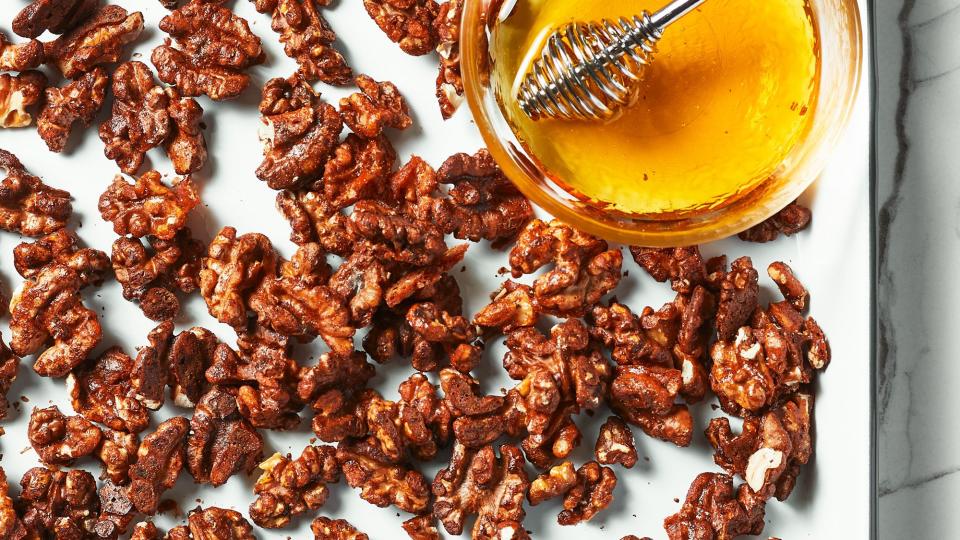
Eat In Color
Even in the dead of winter you can find beautiful, seasonal fruits and vegetables, so play up the produce! "When you eat a variety of colors, you get a fuller spectrum of nutrients and antioxidants," Krieger says. "It's amazing how powerful this one simple step can be for your long- and short-term well-being." Plus, a colorful plate is both enticing and mood-boosting. To ensure you have plenty of produce at your fingertips, Krieger recommends stocking up on frozen fruits and veggies in addition to fresh. "And don't be afraid to get precut or prewashed veggies if that makes produce prep seem more doable for you."
Here, roast chicken gets a healthy pop of color thanks to citrus fruits, arugula, radicchio, and more.
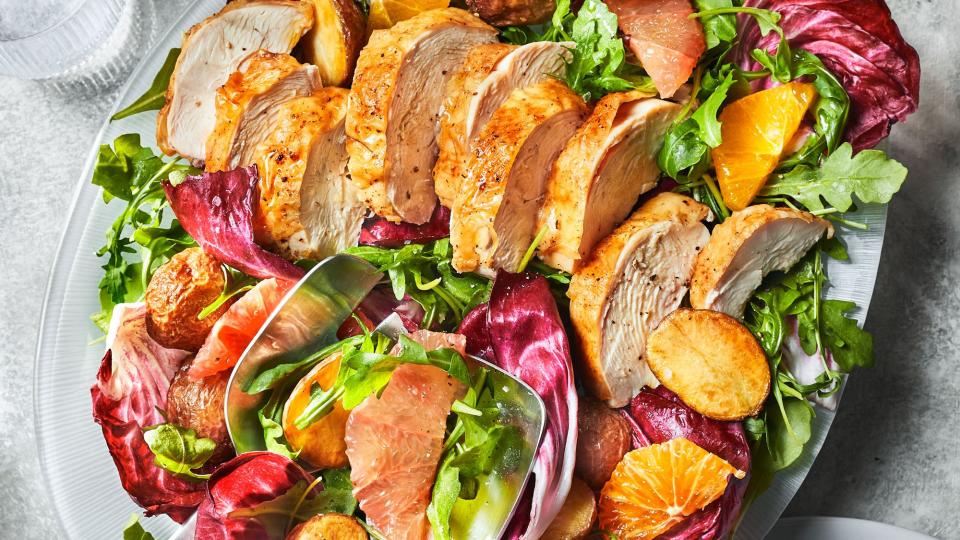
Food Styling By Ali Ramee; Prop Styling By Audrey Davis

 Yahoo Movies
Yahoo Movies 
